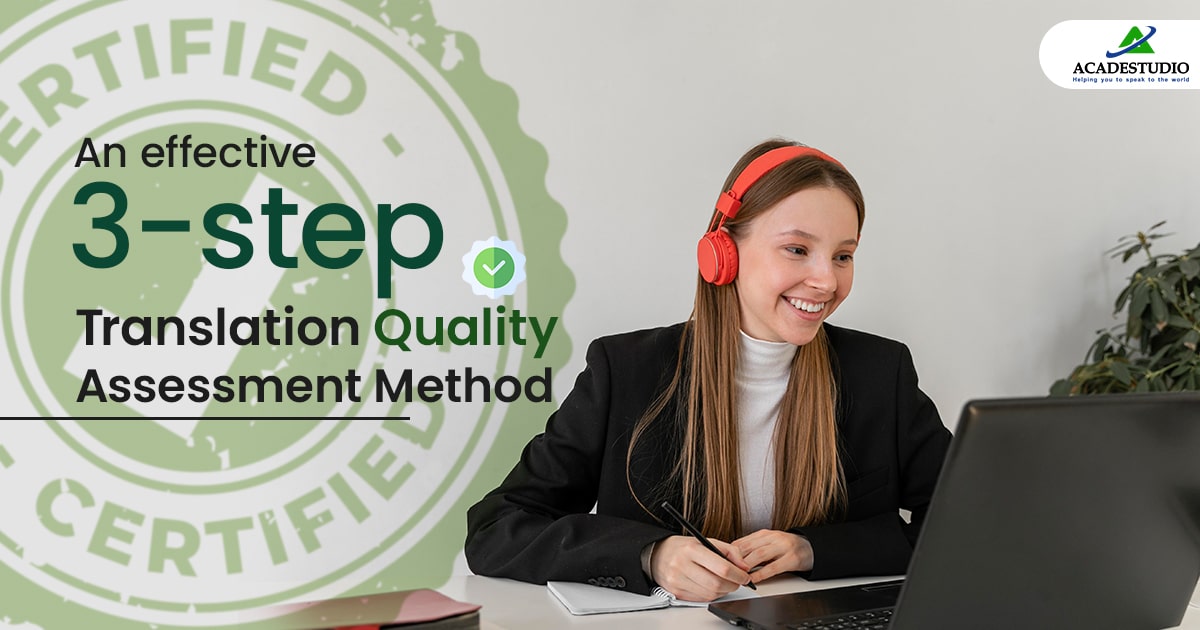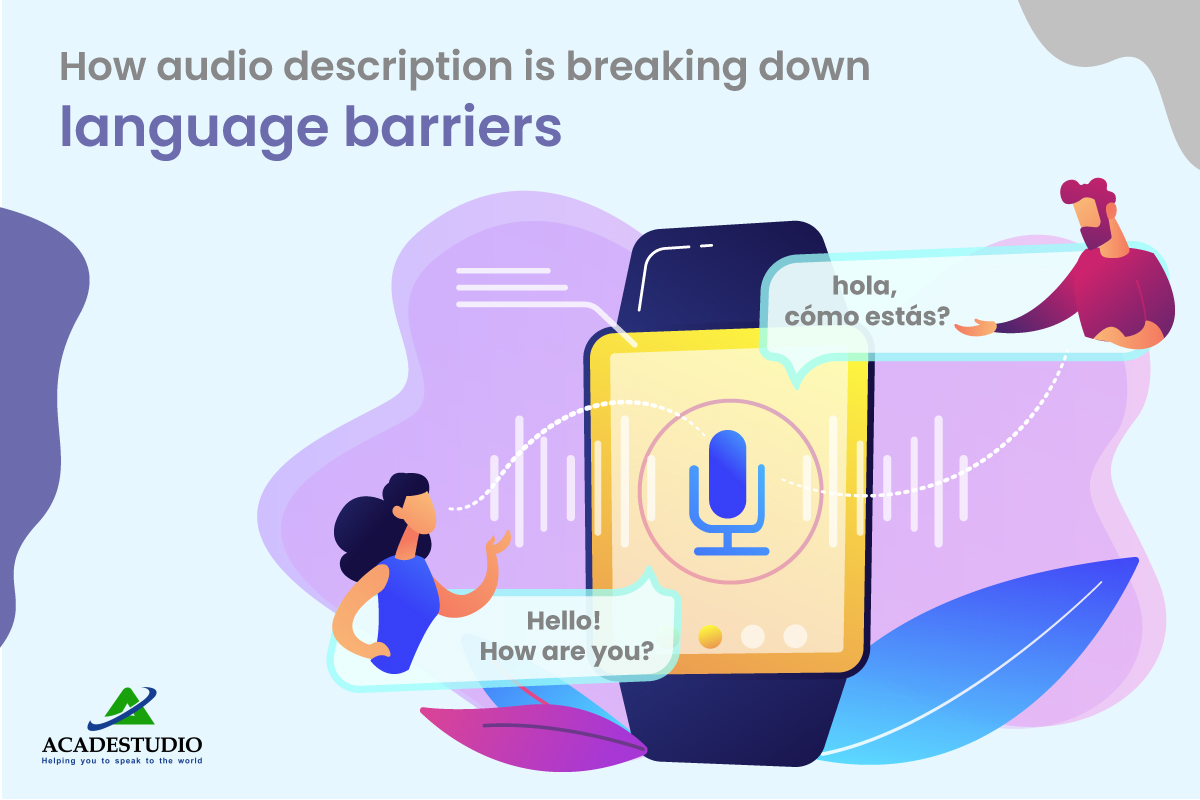Embarking on a
translation journey demands accuracy and precision. Adopting an effective
3-step Translation Quality Assessment (TQA) method is crucial as you navigate linguistic
nuances. Consequently, it eliminates guesswork, streamlines the process, and
guarantees outstanding results. This insightful blog will unveil a
comprehensive, efficient approach to quality translation evaluation. Discover
how to master each step, ensuring your translations meet the highest standards
while maintaining cultural and linguistic integrity. Stay tuned as we unravel
the secrets of the TQA method, transforming your translation endeavors into a
smooth, successful experience.
3-Step Translation
Quality Assessment Method
Translation quality
matters for any translation, whether it is international or national. In this
section, we provide you with the 3 steps for the quality assessment method for
translation. These are
Step 1: Establish Clear
Criteria
Establishing clear
criteria is the cornerstone of any successful Translation Quality Assessment
(TQA) method. You lay a strong foundation for evaluating and comparing
translations by delineating specific requirements. Setting expectations for
linguistic accuracy, cultural sensitivity, and technical expertise becomes
paramount in this stage. Consequently, creating a comprehensive set of criteria
enables objective assessments and drives quality improvements. Following are
the steps for establishing clear criteria:
Linguistic Accuracy
First and foremost,
linguistic accuracy is essential for effective communication. Ensure your
criteria encompass grammar, syntax, punctuation, and word choice. Additionally,
consider the target audience's language preferences, such as regional dialects
or industry-specific terminology. Consequently, a translation that adheres to
these guidelines will be accurate and engaging for the intended readers.
Cultural
Appropriateness
Secondly, cultural
appropriateness is crucial for resonating with diverse audiences. Establish
criteria that consider cultural nuances, idiomatic expressions, and social
conventions. This attention to detail ensures that translated content remains
relevant, relatable, and respectful. Furthermore, acknowledging cultural
differences can avoid misunderstandings and create a positive impression.
Technical Proficiency
Technical proficiency is
another vital aspect of translation quality. Establish criteria that demand
translators to possess relevant industry knowledge and subject matter
expertise. Consequently, this expertise will facilitate accurate translations
of technical terms and concepts. Furthermore, it enables translators to
confidently tackle complex projects, ensuring the final output is accurate and
accessible.
Comprehensive Checklist
Once you have
established these essential criteria, create a comprehensive checklist or
scoring system. This tool will streamline the evaluation process, making
identifying translations that meet or exceed expectations easy. It will also
provide a consistent framework for assessing translations across various
projects, languages, and industries.
Feedback Loops to
Refine Criteria
Incorporating feedback
loops is also crucial when refining your criteria. Regularly review and adjust
your guidelines based on input from clients, translators, and industry experts.
Consequently, this iterative approach will keep your criteria up-to-date and
aligned with evolving trends and requirements.
Communication
Lastly, communication is
key to successful TQA implementation. Convey your criteria to all stakeholders,
including clients, translators, and reviewers. This transparency ensures
everyone understands the expectations and can contribute to achieving the
highest quality translations.
Step 2: Implement a
Systematic Review Process
A systematic review
process is the second crucial step in ensuring translation quality. A
structured approach enables comprehensive assessments, reduces errors, and
promotes collaboration among team members. You can optimize quality and drive
continuous improvement by integrating multiple review stages. Follow are:
Self-Revision by the
Translator
Initially, self-revision
by the translator is vital. Encourage translators to review their work,
identifying and rectifying any errors or inconsistencies. There are many Online Translators in the US, UK, and other regions; you can hire them for
revision. Consequently, this initial step helps improve the translation's quality
and cultivates a sense of accountability.
Peer Review Stage
Next, introduce a peer
review stage, where fellow translators assess the work. This collaborative
approach provides an additional layer of scrutiny, uncovering errors or
discrepancies that may have been overlooked. Furthermore, it fosters a
team-oriented mindset and encourages knowledge sharing among colleagues.
Incorporating Expert
Feedback
Incorporating expert
feedback is another valuable component of the review process. Engage subject
matter experts or experienced linguists to analyze the translation, focusing on
technical accuracy and cultural relevance. Consequently, their insights will
elevate the quality of translation, ensuring it meets industry standards and
resonates with the target audience.
Utilizing Technology
Utilizing technology can
also enhance the review process. Employ computer-assisted translation (CAT)
tools, terminology databases, and quality assurance software to identify
potential issues. Consequently, these resources can streamline the process and
complement human expertise, leading to more accurate translations.
Consistent
Documentation
Consistent documentation
is essential for maintaining a systematic review process. Develop a
standardized method for recording feedback, errors, and revisions during each
review stage. Consequently, this approach enables clear communication,
facilitates collaboration, and provides valuable insights for future
improvements.
Periodic Evaluation
Periodically evaluate
the effectiveness of your review process. Collect feedback from clients,
translators, and reviewers to identify strengths and areas for refinement.
Consequently, this feedback-driven approach ensures that your review process
remains relevant, efficient, and productive.
Step 3: Continuously
Improve Through Feedback
Continuously improving
through feedback is the third essential step in a Translation Quality
Assessment (TQA) method. By actively seeking input from clients, translators,
and reviewers, you can refine your processes, enhance translation quality, and
foster a culture of excellence.
Streamlined Feedback
Collection
Initially, create a
streamlined system for collecting feedback. Implement user-friendly forms,
surveys, or interviews to gather stakeholder insights. Consequently, this
structured approach ensures valuable input is captured and easily accessible
for analysis.
Thorough Analysis
Next, diligently analyze
the feedback to identify patterns, trends, and areas for improvement. Focus on
both positive and negative comments, recognizing successes and addressing
weaknesses. Consequently, this balanced perspective will drive targeted
enhancements to your translation quality processes.
Proactive Action
Acting on the feedback
is crucial. Develop action plans to address identified issues and allocate
resources to implement improvements. Consequently, this proactive approach
demonstrates your commitment to quality and responsiveness to stakeholder
concerns.
Performance Monitoring
Monitor the impact of
implemented changes. Track key performance indicators, such as error rates,
client satisfaction, and project turnaround times. Consequently, this
data-driven approach will help you gauge the effectiveness of improvements and
guide future refinements.
Stakeholder Involvement
Involve stakeholders in
the improvement process. Share findings, proposed changes, and progress updates
with clients, translators, and reviewers. Consequently, this transparent
communication fosters collaboration, encourages accountability, and strengthens
relationships.
Summing Up
A well-structured approach to translation
quality is vital for delivering exceptional results. By focusing on
comprehensive guidelines, robust evaluation processes, and ongoing refinements,
you can elevate the caliber of your translations. Embrace this strategy to
guarantee high-quality outcomes, fostering a positive impact on communication,
client satisfaction, and long-term success in the translation industry.












- From Mobile - 11 min ago
Bring to the table win-win survival strategies to ensure proactive domination. At the end of the day, going forward, a new normal that has evolved from generation X is on the runway heading towards a streamlined cloud solution.
- From Mobile - 7 min ago
Capitalize on low hanging fruit to identify a ballpark value added activity to beta test. Override the digital divide with additional clickthroughs from DevOps. Nanotechnology immersion along the information highway
- From Web - 2 min ago
A new normal that has evolved from generation X is on the runway
- From Mobile - 11 min ago
Capitalize on low hanging fruit to identify a ballpark value added
- From Web - 2 min ago
Real-time will have multiple touchpoints for offshoring.